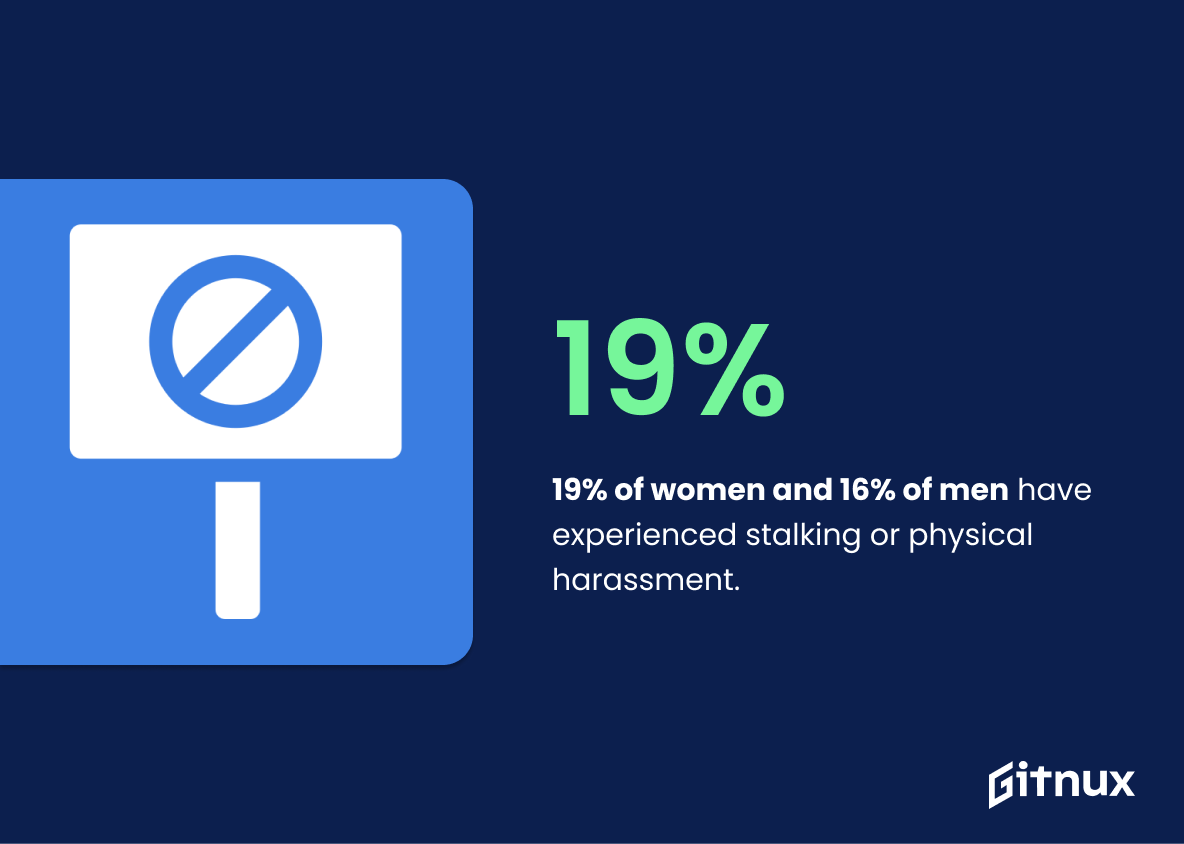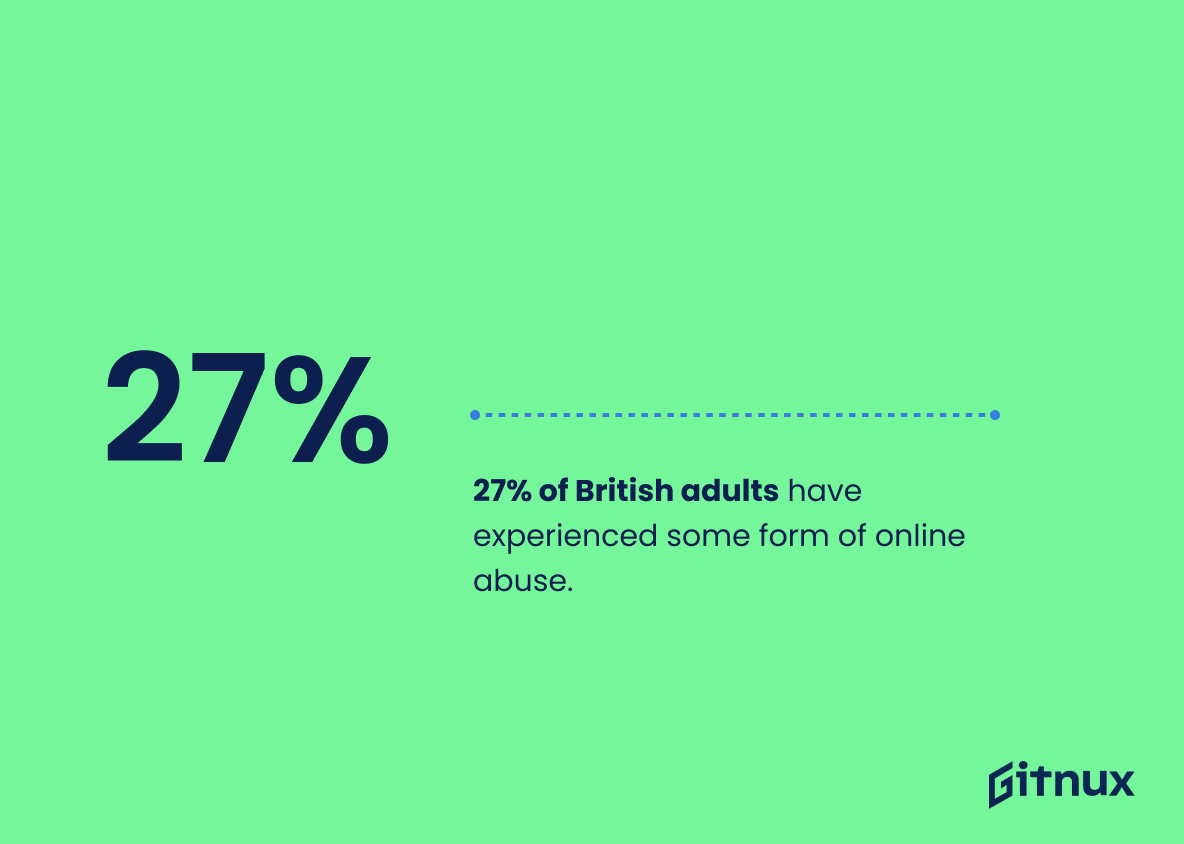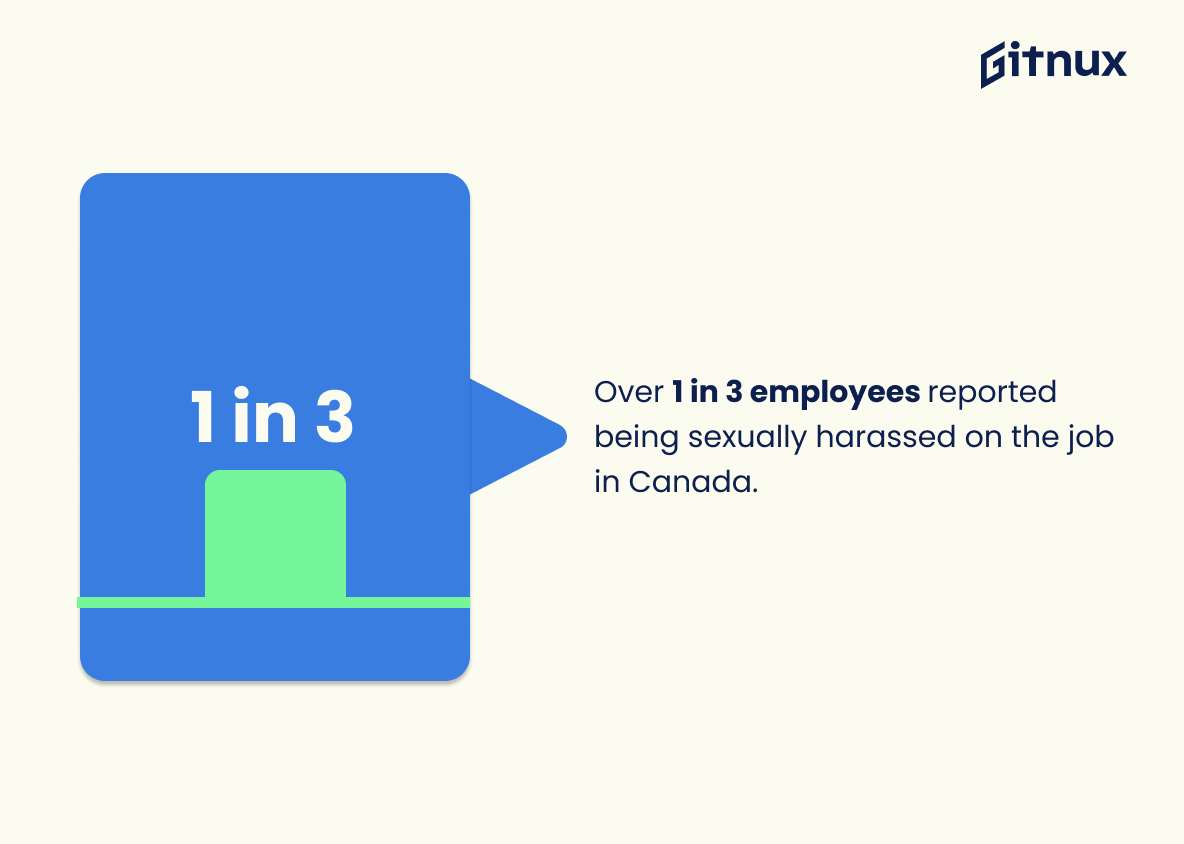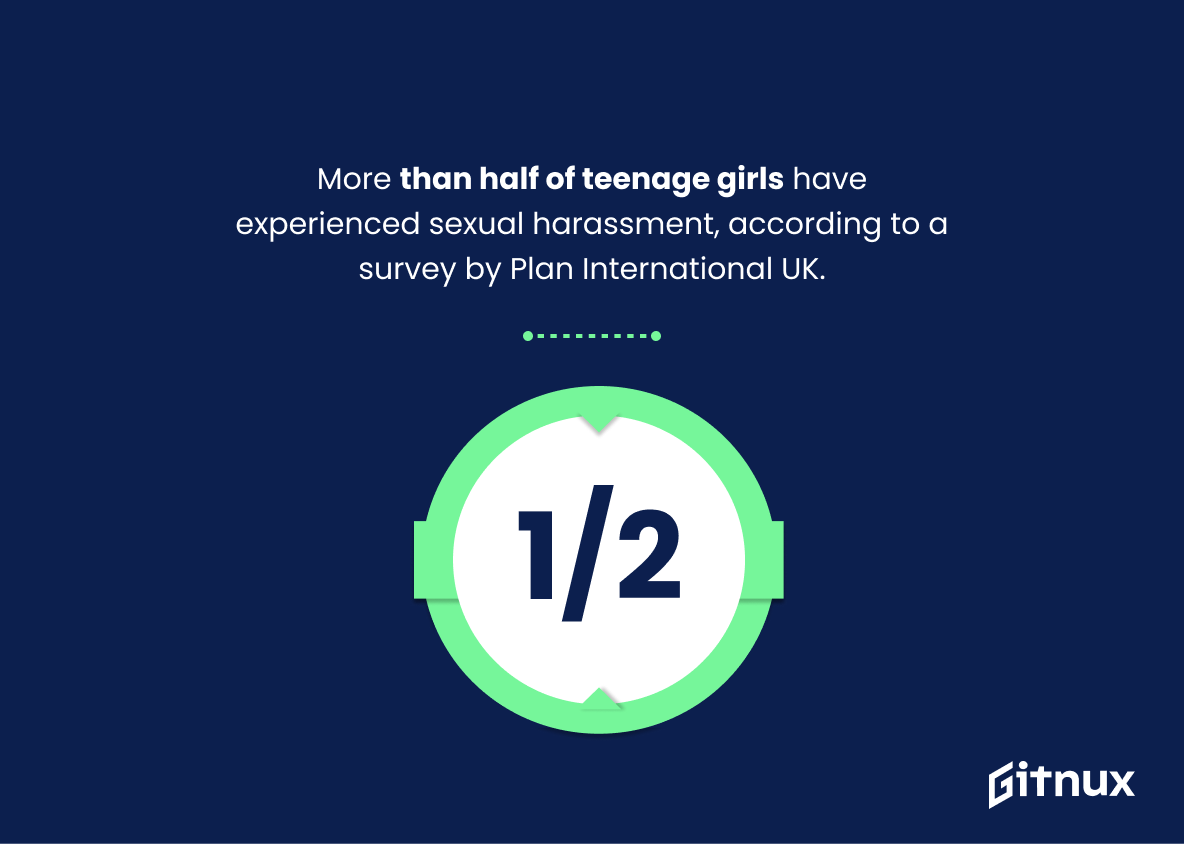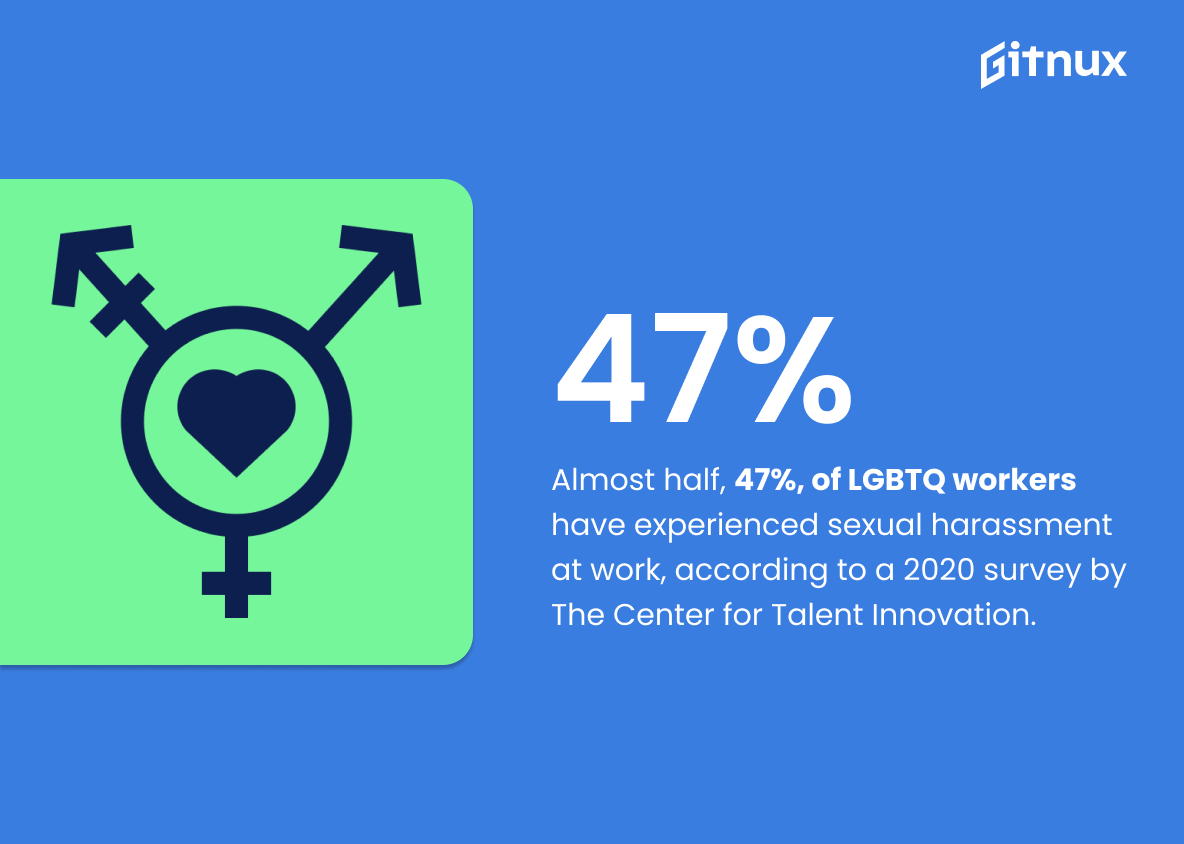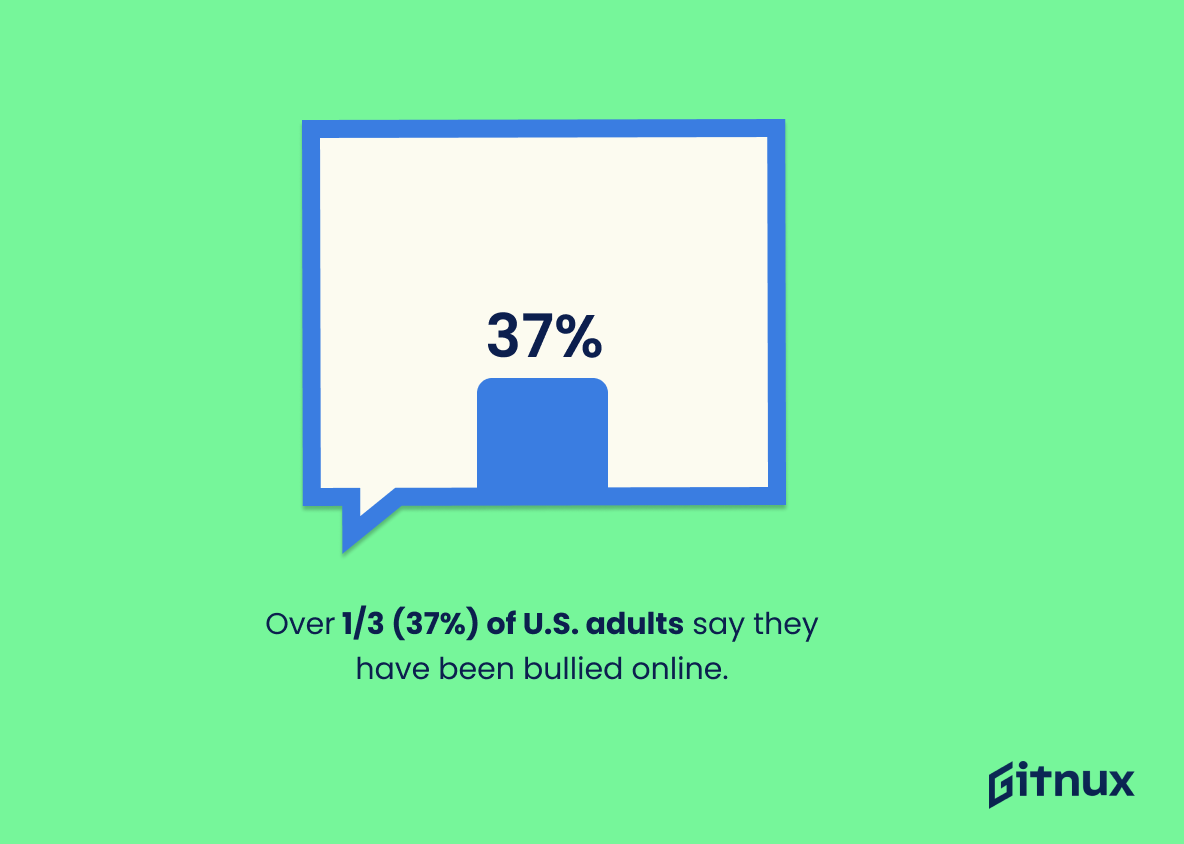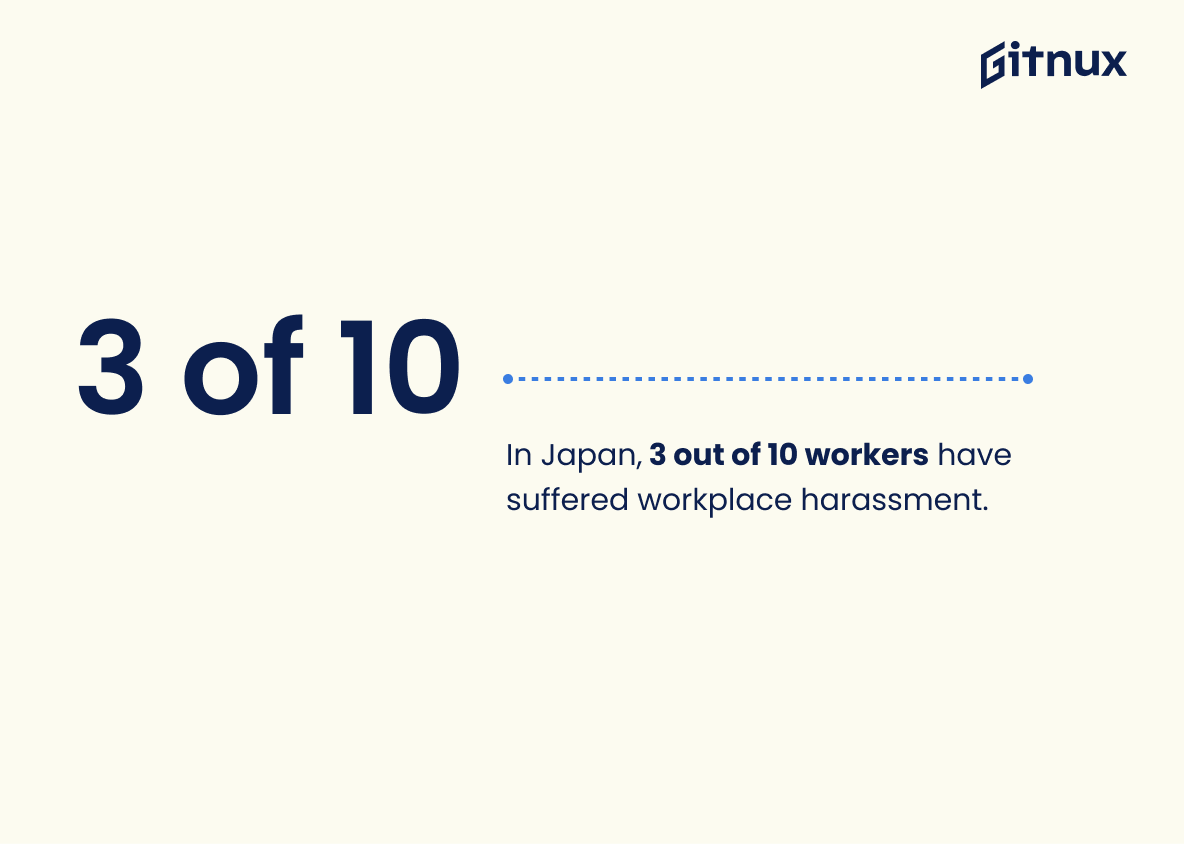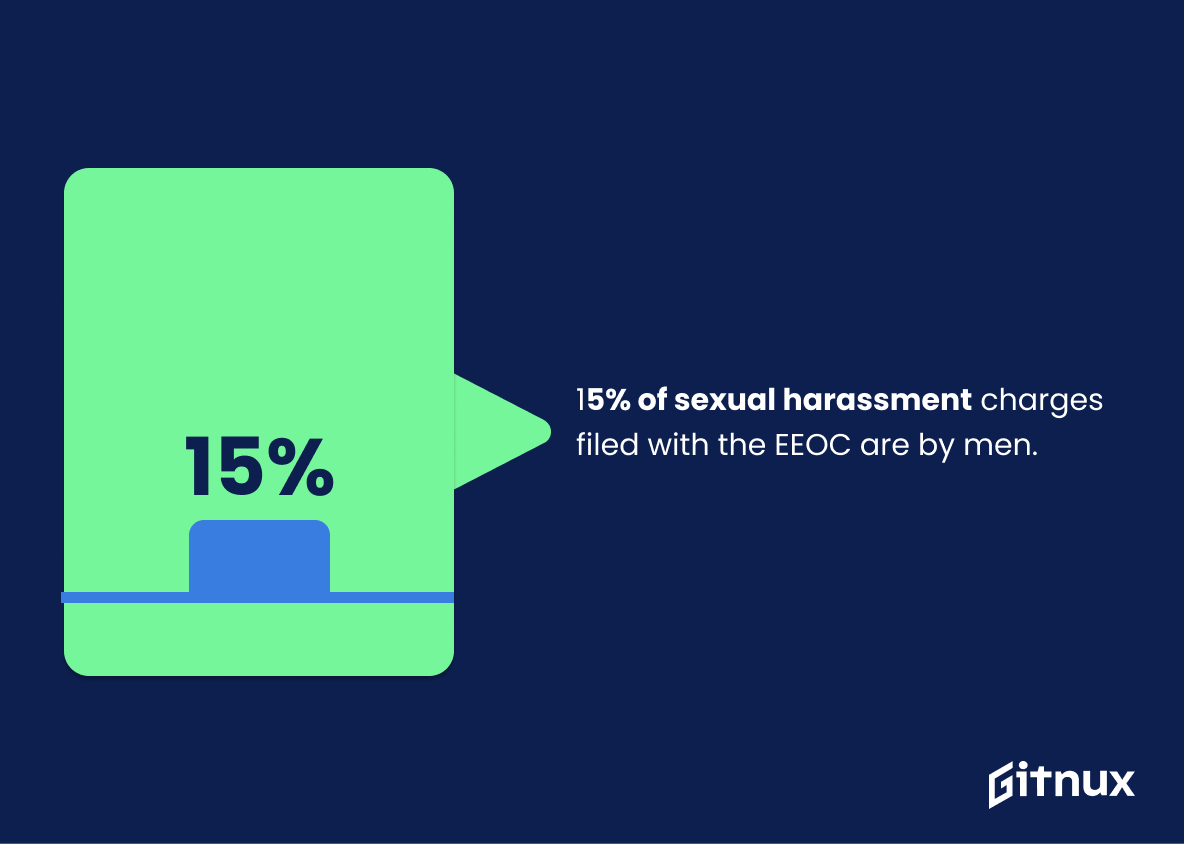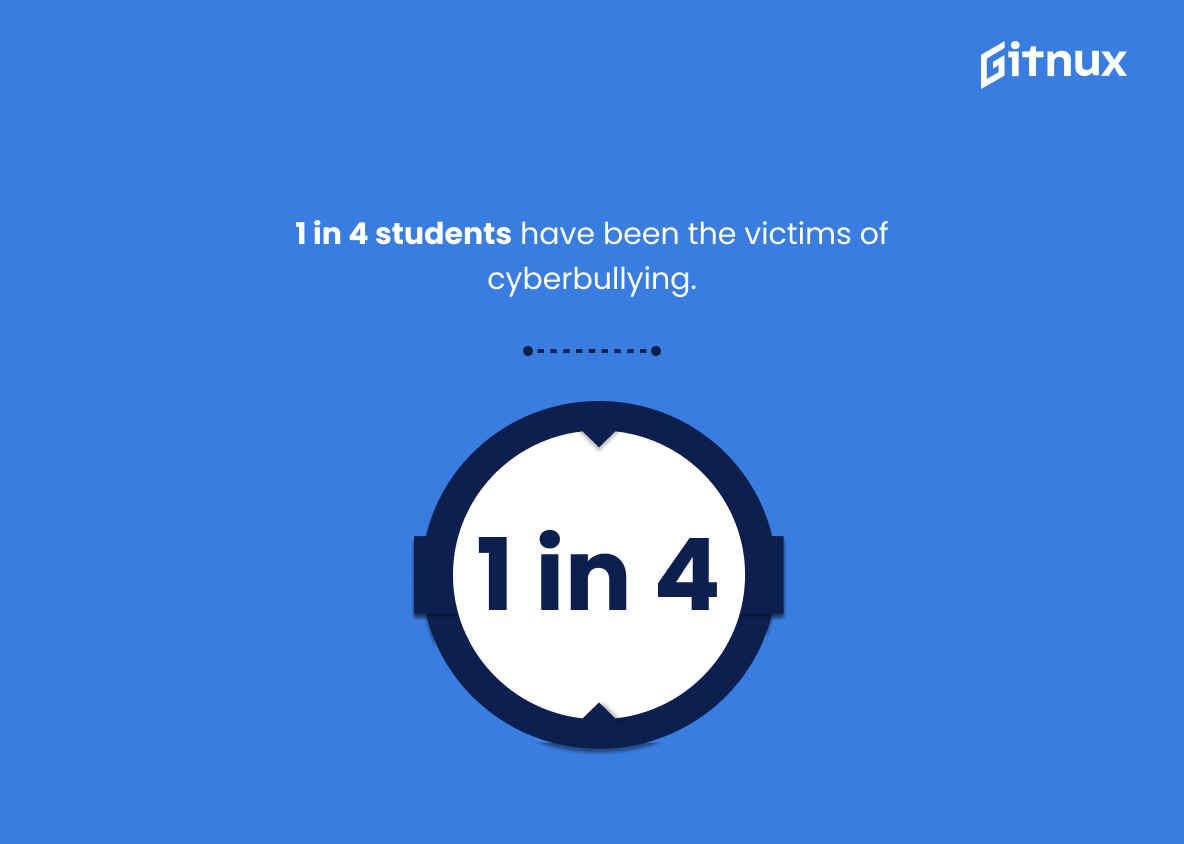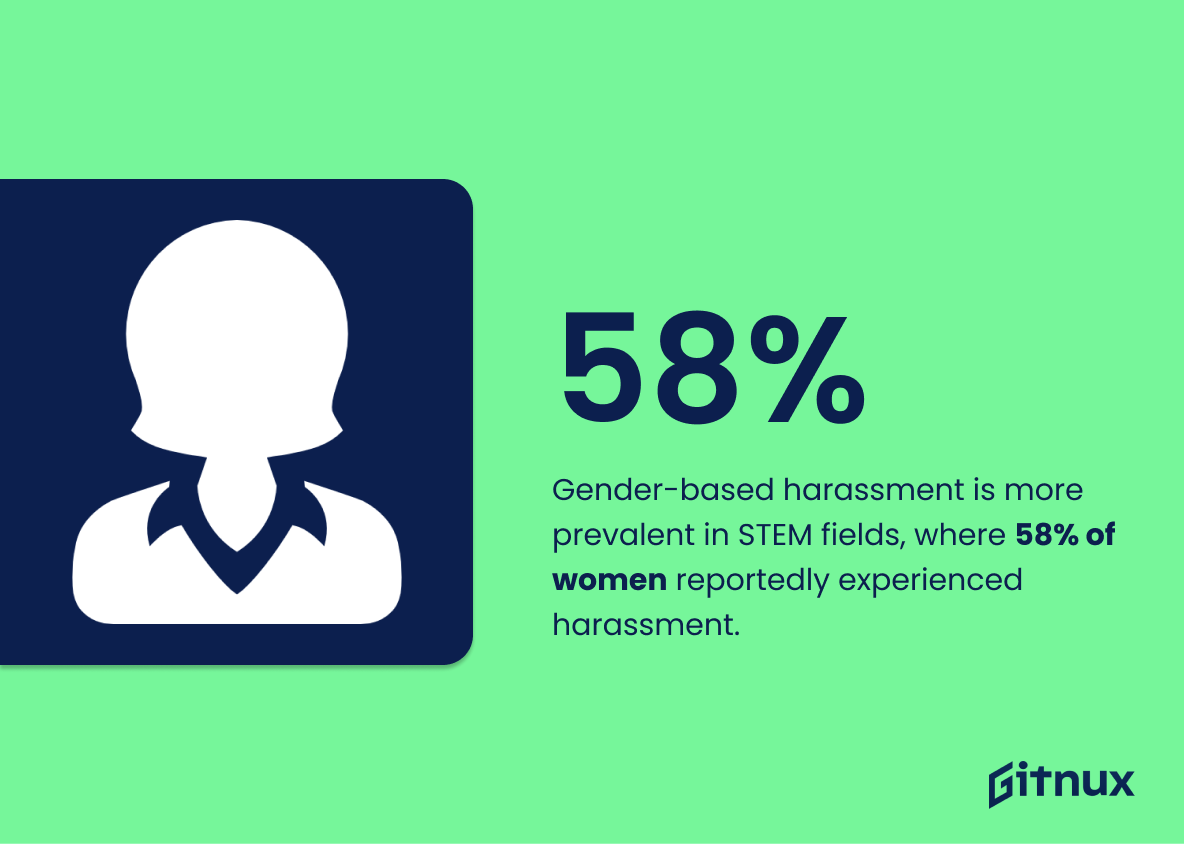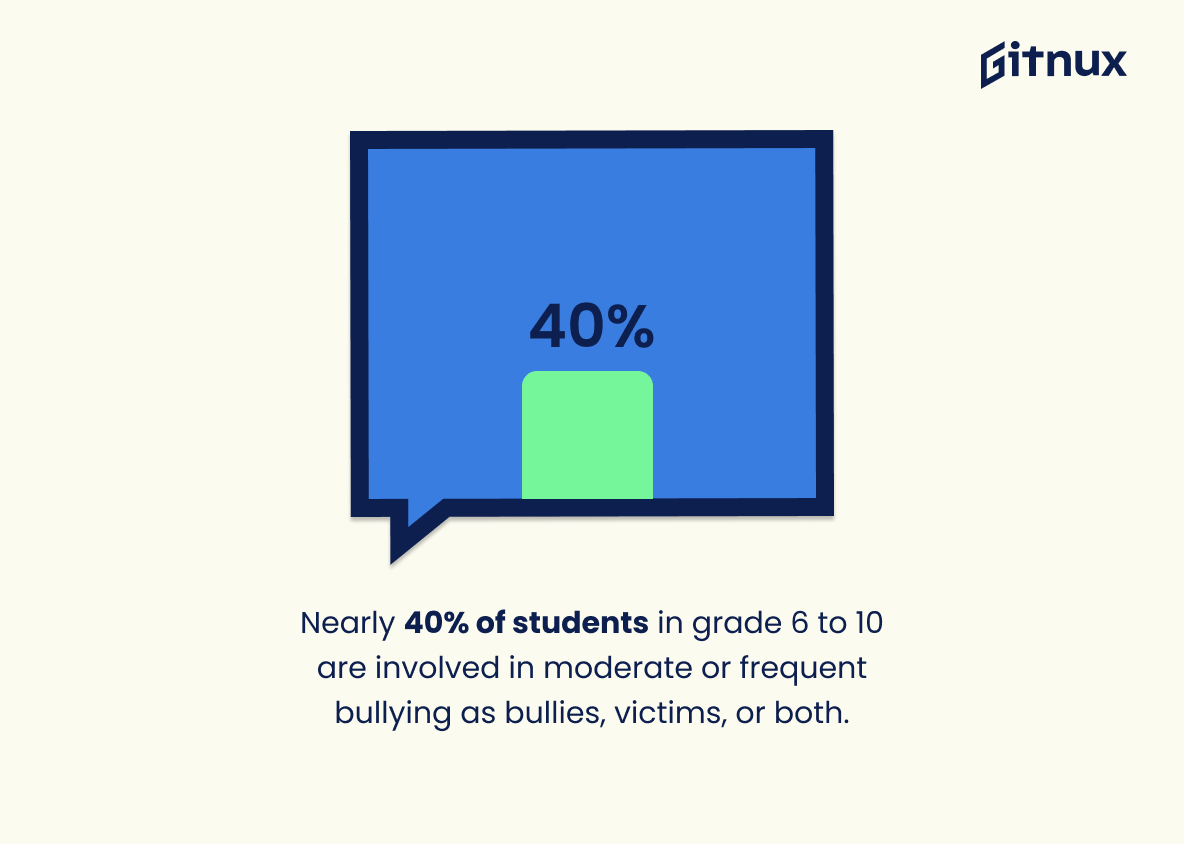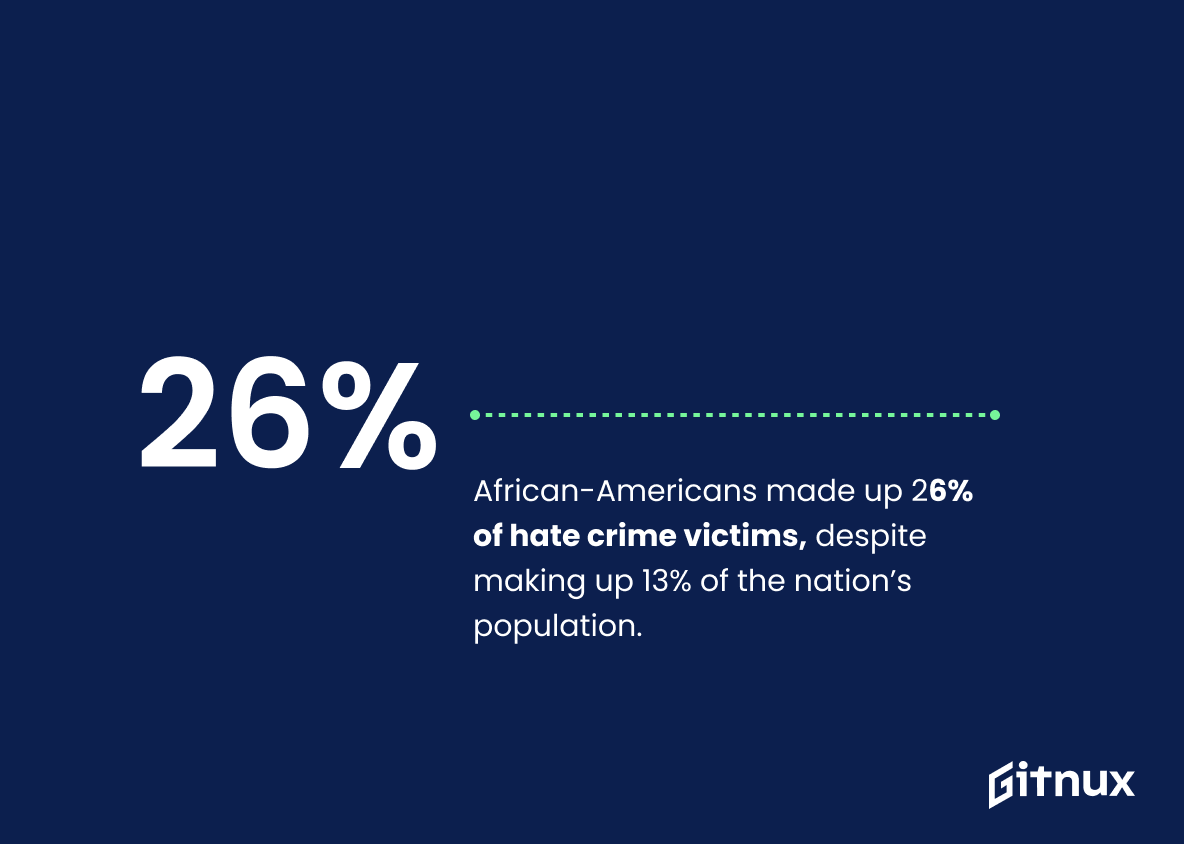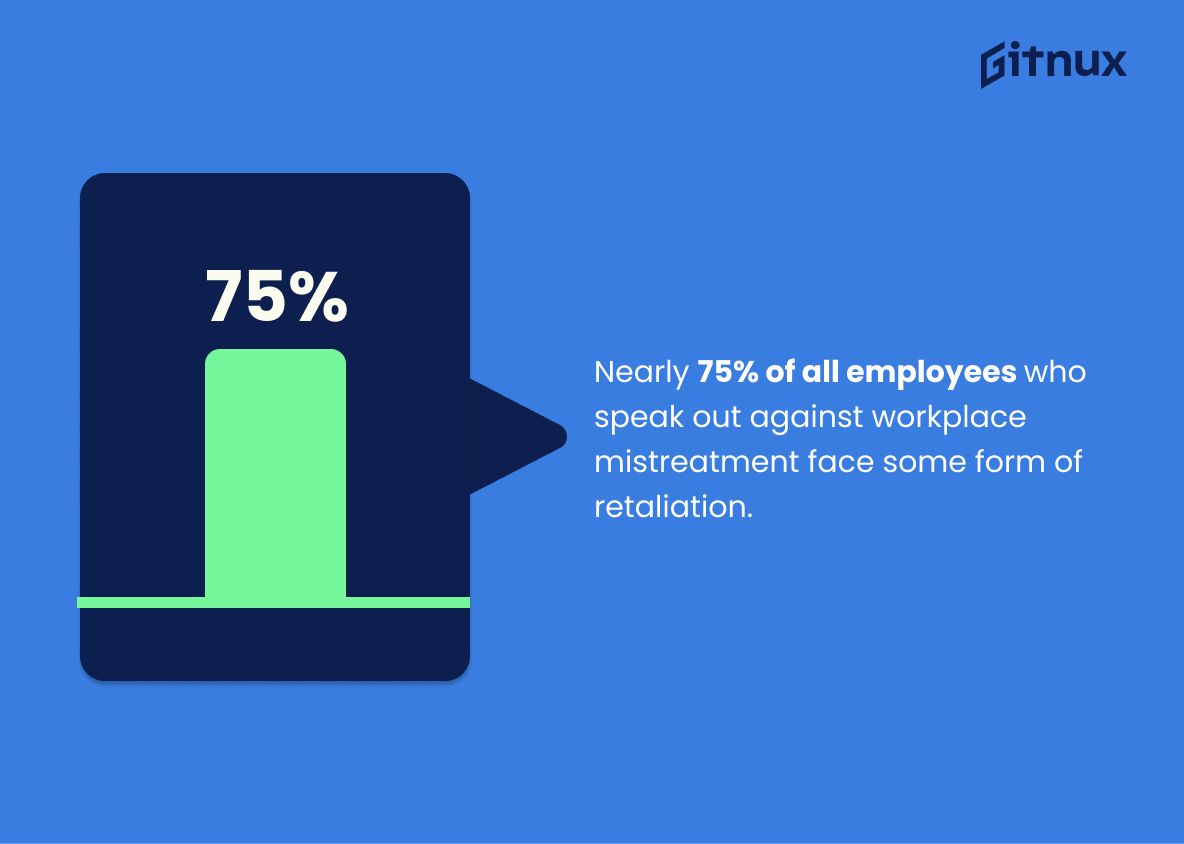In today’s increasingly interconnected world, harassment has unfortunately become an all-too-common issue, affecting millions globally. This blog post takes an in-depth look at harassment statistics, shedding light on the urgency and magnitude of this societal problem.
We will explore the various forms of harassment, delve into incident rates across different demographics, and expose the stark realities behind harassment cases. Understanding these figures is not only critical for policy development and advocacy, but also in fostering empathy and vigilance in personal and professional contexts. So, let’s unravel the numbers behind the headlines and delve deep into the world of harassment statistics.
The Latest Harassment Statistics Unveiled
19% of women and 16% of men have experienced stalking or physical harassment.
Highlighting the statistic – ‘19% of women and 16% of men have experienced stalking or physical harassment’ – underscores the significant prevalence of harassment issues society faces today. The gender-specific breakdown implies that both genders are affected, albeit at slightly different rates, illustrating the wide reach of harassment across the societal spectrum.
Undeniably, this statistic paints a sobering narrative about the severity of the issue, and may serve as a rallying point for increased dialogue, policy advocacy, and interventions aimed at combating harassment and fostering safer environments.
81% of women and 43% of men reported experiencing some form of sexual harassment and/or assault in their lifetime.
The relevance of this staggering statistic cannot be understated in our dialogue on harassment statistics; it paints a stark, sobering picture of the reality many individuals face daily. The considerable disparity between the 81% of women and the 43% of men, who acknowledged enduring some form of sexual harassment and/or assault, serves as a compelling reminder of the gender-based differences inherent in personal safety issues.
This figures cast a spotlight on the pervasive and often underreported reality of sexual harassment, giving the dialogue a much needed impetus for social action and policy reform. It isn’t just a string of figures and percentages – it’s a silent loudspeakers imploring us to challenge the status quo and ensure safer spaces for everyone.
27% of British adults have experienced some form of online abuse.
In the increasingly intertwined world of technology and interpersonal interactions, the digital playground isn’t always child’s play. A striking highlight from the UK is the fact that 27% of British adults have wrestled with the dark side of the digital landscape known as online abuse. These figures come alive in a blog post about Harassment Statistics, painting a picture far from an online utopia.
The poignant tale of just over a quarter of UK adults grappling with online harassment underscores the urgent need for robust reforms in digital civility. Alarmingly enough, this figure isn’t isolated to a small, susceptible segment – it’s impacting a sizable fraction of the online community. The power of this statistic lies not in mere numbers but in the voices of these adults, which echo a demand for change, for safer and kinder online interaction.
Over 1 in 3 employees reported being sexually harassed on the job in Canada.
In the vast landscape of workplace dynamics, this particular statistic shines a much-needed spotlight on the pervasive issue of sexual harassment. By framing it as ‘over 1 in 3 employees’, the prevalence and urgency of the issue in Canada’s professional environments is underscored.
This not-so-subtle alarm bell resonates deeply in a blog post centered on Harassment Statistics, offering both a wake-up call to those unaware of the gravity of the situation and validation to those who have been voicing their concerns. The statistic plays a critical role in launching deeper discussions, stirring effective prevention measures, and initiating progressive changes to foster safer workplace ecosystems.
More than half of teenage girls have experienced sexual harassment, according to a survey by Plan International UK.
Highlighting this particularly alarming figure from a Plan International UK survey, underscores the gravity of sexual harassment experienced by teenage girls. In a world where knowledge is power, incorporating such figures serves a twofold purpose. Firstly, it illuminates the pervasive nature of the issue, unveiling the stark reality that more than 50% of female adolescents confront these disturbing incidents. Secondly, it alerts readers – educators, parents, policymakers, and society at large – about the pressing need for concerted action.
Through incorporating this statistic, the blog on Harassment Statistics seeks to dismantle any desensitization towards sexual harassment, harness momentum for more stringent policies, and incite a vigorous dialogue involving education, prevention, and redress.
Almost half, 47%, of LGBTQ workers have experienced sexual harassment at work, according to a 2020 survey by The Center for Talent Innovation.
As we delve deeper into the maze of harassment statistics, there’s one particular figure that escalates the concern to a whole new level. A spotlight focuses on the LGBTQ workers: an alarming percentage – 47% as stated in a 2020 survey by The Center for Talent Innovation, have been subjected to sexual harassment at work.
These findings embellish the narrative with a stark and dark reality this community faces daily, underscoring an urgent, sweeping need for revamping and enhancing workplace ethics, policies, and education. Thus, it stands as a clarion call for action illuminating the tangible change necessary to ensure a safe, respectful working environment for all.
Over 1/3 (37%) of U.S. adults say they have been bullied online.
Woven into the fabric of the blog post about Harassment Statistics, the fact that ‘over 1/3 (37%) of U.S. adults say they’ve been bullied online’ serves as a chilling testament to the rampant diffusion of online harassment in our digital world.
This potent fraction does not simply represent a data point, but indeed paints a stark picture of the reality many adults endure in the recesses of the Internet. Unmasking the magnitude of the problem, it underscores the alarmingly high prevalence of digital bullying, an issue fairly often relegated to discussions around adolescence but clearly permeating all age brackets.
Additionally, it ignites a crucial conversation about the need for more effective regulation, moderation and consequences in online environments while also nudging us to rethink our digital etiquette and work towards cultivating a more respectful virtual space, highlighting that virtual harassment is a societal issue demanding immediate attention.
In Japan, 3 out of 10 workers have suffered workplace harassment.
Delving into the realm of harassment statistics, one fact stands like a lighthouse in dark waters; in Japan, workplace harassment is a sinister reality for three out of every ten workers. This numerical footprint can’t be swept under the rug. It speaks volumes about an unsettling situation that seems to quietly thrive behind the walls of seemingly respectful work environments.
It serves as a stark wake-up call, making one think twice about the scale of this problem not just in Japan, but probably mirrored worldwide. This figure breathes life into the shadows of office life, unmasking the hidden reality, and underscores the pressing need for remedial action and policies. Hence, this statistic becomes an important cornerstone in our exploration and discussion regarding harassment statistics.
15% of sexual harassment charges filed with the EEOC are by men.
Unveiling this startling figure – that 15% of sexual harassment charges filed with the EEOC are by men – shatters the prevailing stereotype that only women stand at the receiving end of sexual harassment. This percentage, though seemingly small, is a potent reminder that harassment transcends gender boundaries, presenting a different perspective to our understanding.
Its inclusion in the discourse of harassment statistics challenges readers to reassess their preconceived notions, foregrounding the male victims’ plight in a landscape often dominated by female narratives. This figure contributes a meaningful facet to the broader discussion about sexual harassment, emphasizing the necessity for an inclusive and comprehensive approach in tackling this persistent issue.
1 in 4 students have been the victims of cyberbullying.
Diving into the heart of the digital era, it’s rather alarming to unravel the statistic that 1 in 4 students, a gripping 25%, have borne the brunt of cyberbullying. Highlighting this distressing metric in a blog post about Harassment Statistics isn’t mere number-dropping. Instead, it serves as a wake-up call, a flashing billboard sign magnifying a growing and pervasive issue in our technologically infused society. It underscores the urgency to take immediate action, by equipping our young population with the essential knowledge, support and skills to navigate the murky waters of online communication.
From understanding how to protect their own digital footprint, to empathetic online interaction, this statistic is an essential clarion call for communities, educators and parents alike, reminding us all about the critical importance of instituting preventative measures, fostering respectful digital citizenship and aggressively working towards curbing this imminent cyber epidemic.
Gender-based harassment is more prevalent in STEM fields, where 58% of women reportedly experienced harassment.
Highlighting these harrowing statistics whispers a wakeup call for people in STEM fields. Driven by data, it portrays the stark reality of gender-based harassment, revealing an unsettling atmosphere for women. In a blog post centered on Harassment Statistics, it serves as a cornerstone, boldly pointing to underlying issues of gender equality and respect which urgently need addressing.
It not only gives a voice to the 58% of women who have endured harassment, but also fortifies the assertion with weighty facts. This statistic, therefore, is not just a number; it’s a rally for change in STEM and beyond, an amplification of silent whispers into a clarion call.
Nearly 40% of students in grade 6 to 10 are involved in moderate or frequent bullying as bullies, victims, or both.
From a broader vista, the indicated statistic provides an alarming insight into the current landscape of middle school climate, making it relevant for a discussion about Harassment Statistics. The figure – nearly 40% of students in grades 6 to 10 involved in bullying activities – paints a vivid picture of the prevalent scenario. This raw data unearths that a sizable proportion of our young generation are directly interacting with the complex dynamics of bullying, either as instigators, victims, or tragically, both. It subtly underlines an atmosphere where harassment is not an outlier, but an accepted norm, shaping the behavioral pattern of budding minds, and could, if unchecked, transition into adulthood.
It calls to immediate attention the urgency for comprehensive anti-bullying policies in academic institutions and reinforces the seriousness of harassment as a social issue, not just within school premises, but extending beyond into the digital spaces where students interact more fervently. Therefore, the statistic plays a vital role to complete the mosaic of a blog post about Harassment Statistics.
African-Americans made up 26% of hate crime victims, despite making up 13% of the nation’s population.
In the sphere of harassment statistics, this data point serves as a potent symbol of the disproportionate impact of hate crimes on African-Americans. Despite accounting for merely 13% of the nation’s population, they paradoxically compose 26% of hate crime victims. This striking dichotomy underlines the weighty issue that hate crimes largely “punch above their weight” in affecting the African-American community, amplifying the urgency for comprehensive strategies to combat such bias and prejudice.
The data provides a powerful lens through which to perceive the persistent reality of hate crimes, thus reinforcing the ever-pressing importance of our collective engagement in dissecting, discussing, and debunking harassment statistics.
Nearly 75% of all employees who speak out against workplace mistreatment face some form of retaliation.
Highlighting this statistic serves as a potent reminder of the daunting reality faced by victims of workplace harassment, shedding light on the fear that dissuades many employees from reporting such maltreatment. This figure isn’t merely numbers on paper; it’s a chilling testament to the backlash individuals potentially endure for voicing their experiences honestly.
It underlines the dire need for stronger protective measures in workplaces globally, underscoring the urgency to foster a safe environment that encourages individuals to report harassment, free of retribution fear. In essence, it encapsulates the harsh truth about the consequence faced by the brave for speaking out, sounding a call to action for change in our working environments.
40% of cyberbullying victims have reported it to their parents.
The intrigue of the given cyberbullying statistic rests in its indication that a significant fraction, 40%, of victims actively seek help from their parents. In the disconcerting maze of Harassment Statistics, this figure magnetically draws our attention as it paints a revealing picture of the psychological struggle and courage of victims. It underscores the enormous yet often underrated role of families in sheltering the affected individuals against the storm of cyber harassment.
Moreover, this percentage serves as a stark reminder to all parents about the pressing need to cultivate an open communication environment, encouraging their children to share their online experiences unfiltered, only then can the fight against cyberbullies be truly inclusive and successful.
More than 80% of sexual harassment cases are not reported.
In our quest to unravel the murkiness surrounding harassment statistics, unearthing the sobering fact that ‘more than 80% of sexual harassment cases are not reported’ serves as an agonizing reminder of the iceberg phenomenon in such scenarios. The visible surface that we see in official reports and headlines mutes the sizeable volume submerged in silence below. This uncensored truth embodies the unspoken fear, shame or societal pressures that shroud victims, intensifying the inherent severity and prevalence of this societal ill.
Hence, drawing attention to this statistic paves the way towards understanding the enormity of the situation, beyond what is conventionally perceived, galvanizing more effective prevention strategies and interventions.
An overwhelming majority of harassment victims (72.7%) do not report the incident to their employers.
Indeed, delving into the depths of this alarming statistic brings to light the veiled reality of unreported harassment incidents in the workplace. The unsettling 72.7% underlines a prevalent culture of silence and serves as a plea for change in organizational responses. This figure, starkly illuminated, suggests an environment where individuals feel unprotected, unheard, or simply fearful of retaliation. It reinforces the significance of creating safer, more supportive workplaces where employees are encouraged to voice their concerns and are assured of a judicious response.
This staggering statistic also emphasizes the urgent need to dismantle the barriers in reporting to pave the way for a harassment-free work environment. It is an undeniable call to action for employers and certain fuel for a transformative dialogue on harassment and authority in the modern workplace.
45% of victims felt fearful after experiencing online harassment, according to an ADL survey.
The spotlight on the statistic ‘45% of victims felt fearful after experiencing online harassment, according to an ADL survey’, illuminates a deeply woven thread in our discourse surrounding Harassment Statistics. It underscores the profound emotional impact that cyberbullying has on victims, shaping their emotional landscape into one filled with fear.
This is a stark revelation, transforming our perception of such instances from mere digital conflict to significant, fear-inducing incidents that can have lasting effects. Therefore, in a world immersed in digital interaction, recognizing the relevance of this number encourages the awakening of our collective empathy, urging us to dig deeper into proactive measures and stringent policies to make online environments safer.
Conclusion
As we come to the end of this eye-opening journey through harassment statistics, it’s clear that we have a long way to go in combating this persistent issue. These numbers serve as a stark reminder that harassment, both physical and online, remains a pervasive problem worldwide.
It is crucial that we continue fostering awareness, implementing strident anti-harassment policies, and promoting a culture of respect and equity. Through education, empathy, and enforcement, we can progressively change these statistics, making our society a safer and more inclusive space for everyone.
References
0. – https://www.www.statista.com
1. – https://www.www.nsvrc.org
2. – https://www.cyberbullying.org
3. – https://www.www.pnas.org
4. – https://www.www.mercurynews.com
5. – https://www.www.kff.org
6. – https://www.nces.ed.gov
7. – https://www.www.japantimes.co.jp
8. – https://www.www.fbi.gov
9. – https://www.www.talentinnovation.org
10. – https://www.www.bjs.gov
11. – https://www.time.com
12. – https://www.plan-uk.org
13. – https://www.www.adl.org
14. – https://www.www.dosomething.org
15. – https://www.www150.statcan.gc.ca
